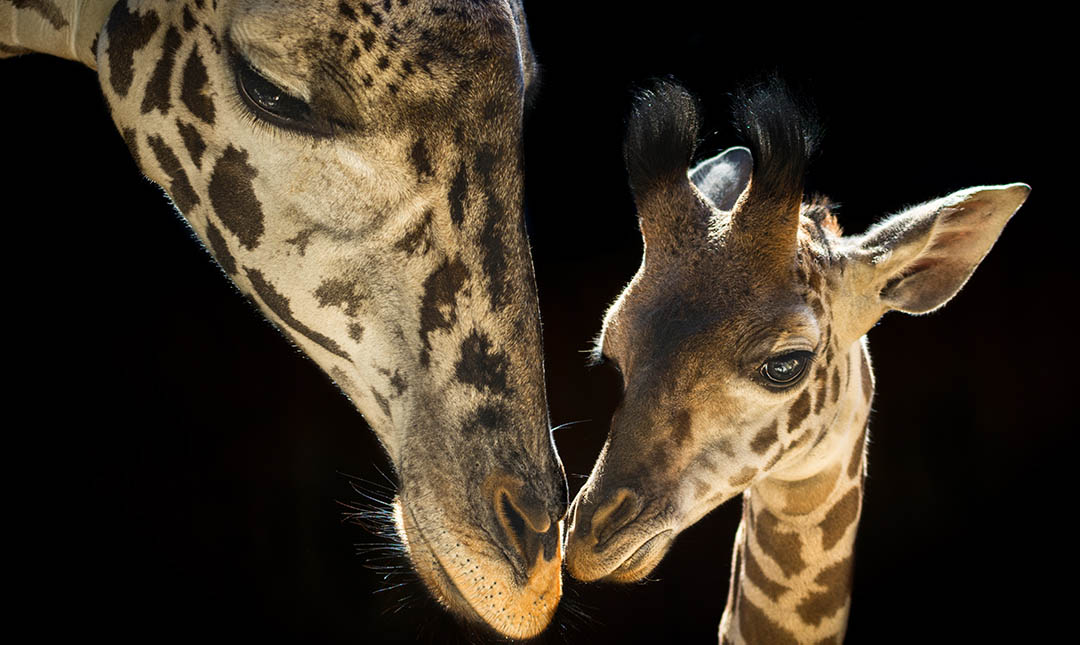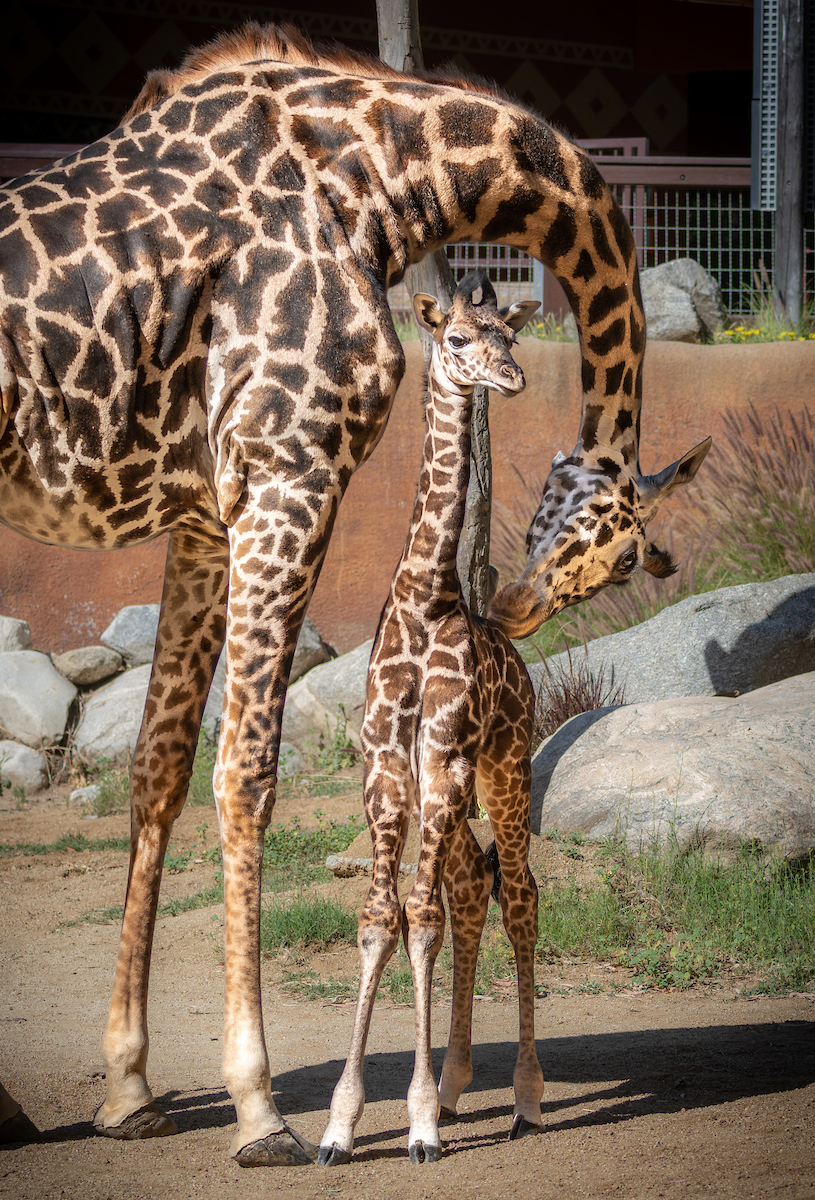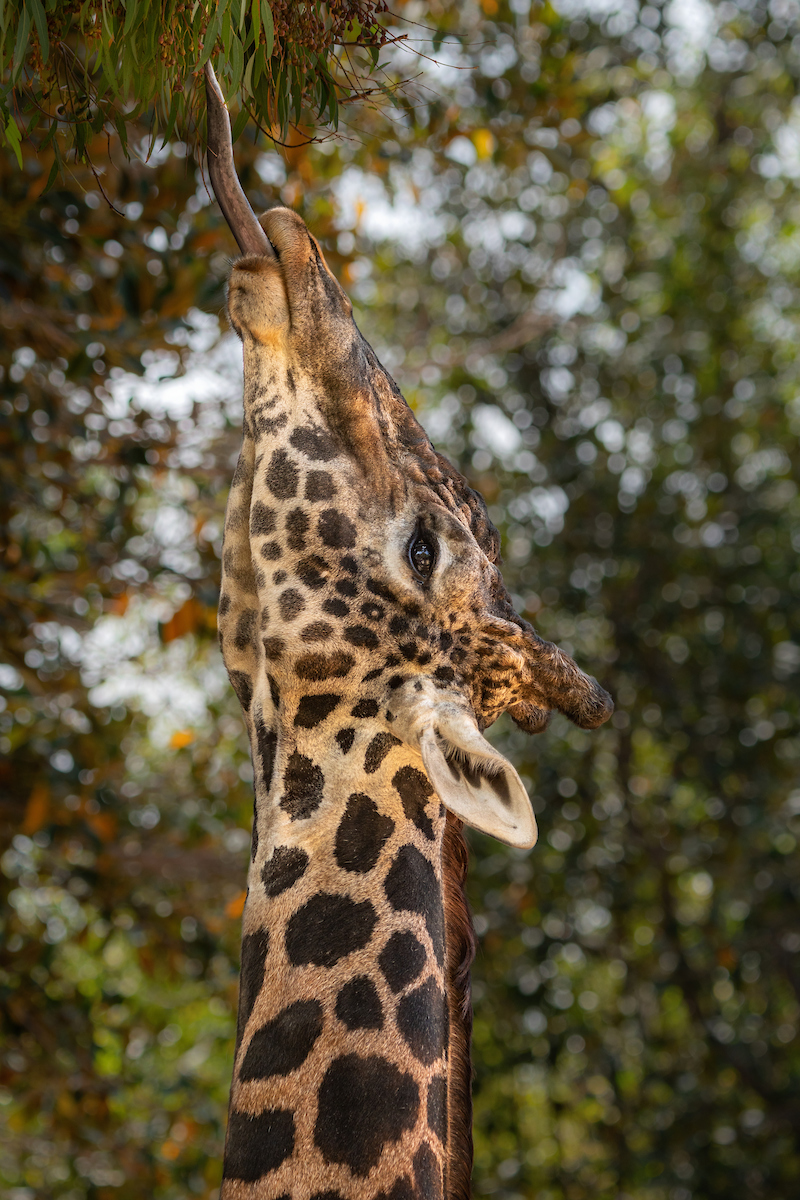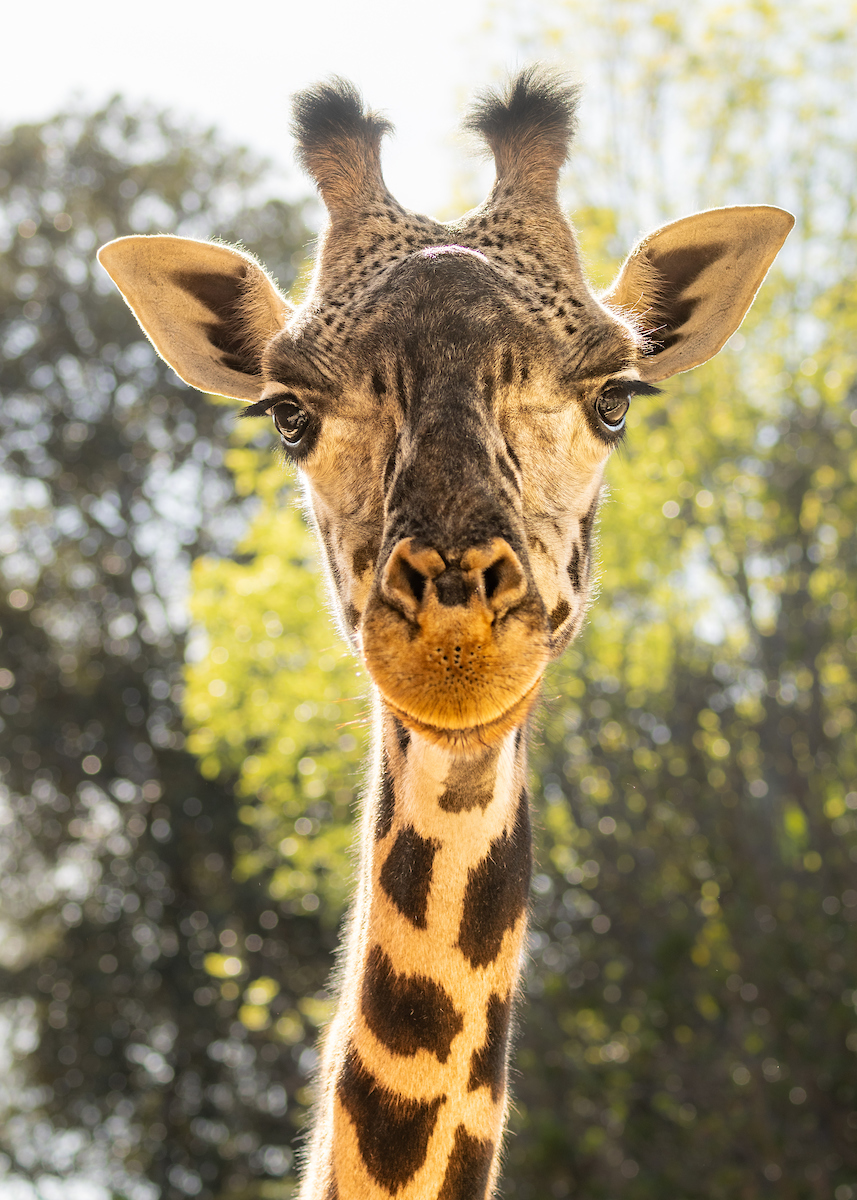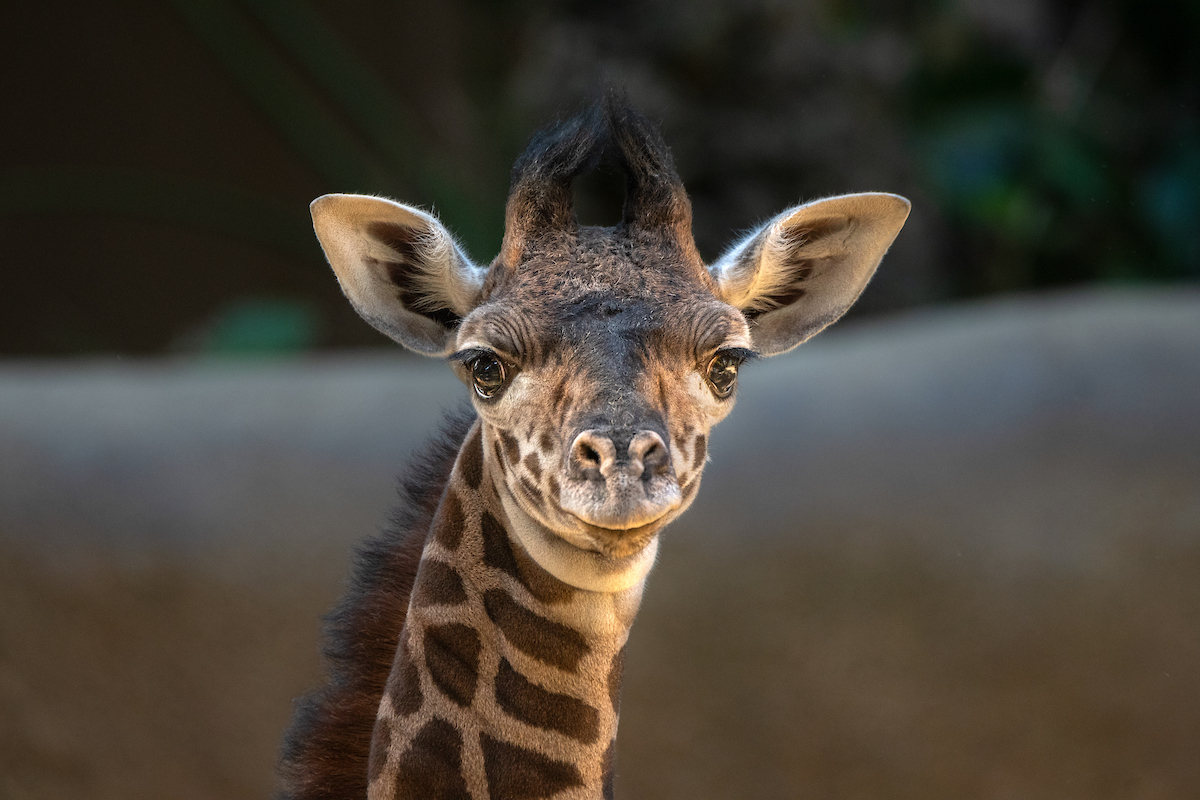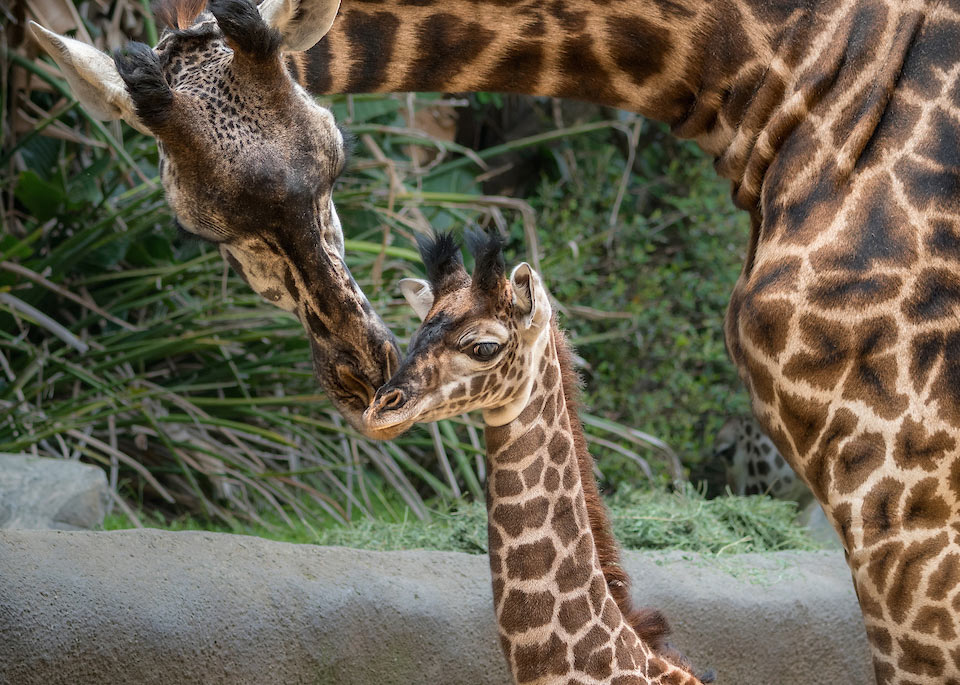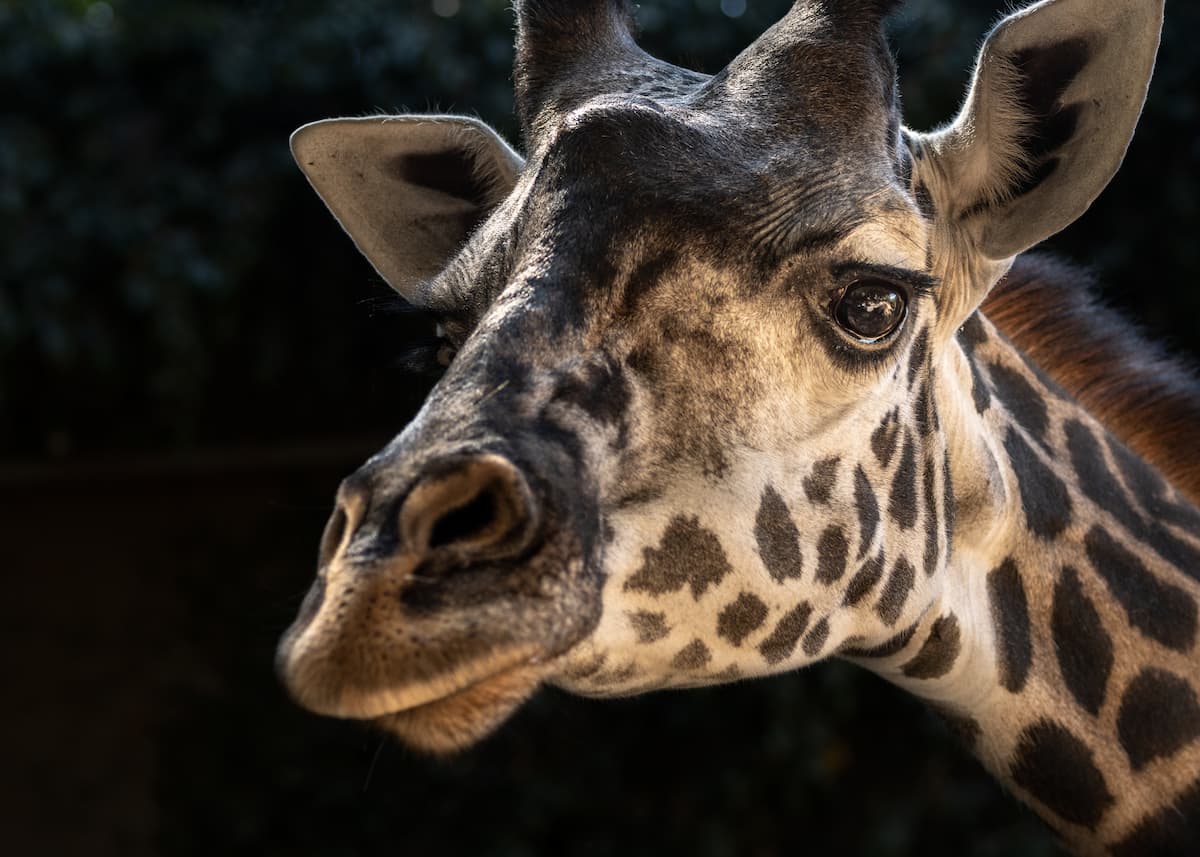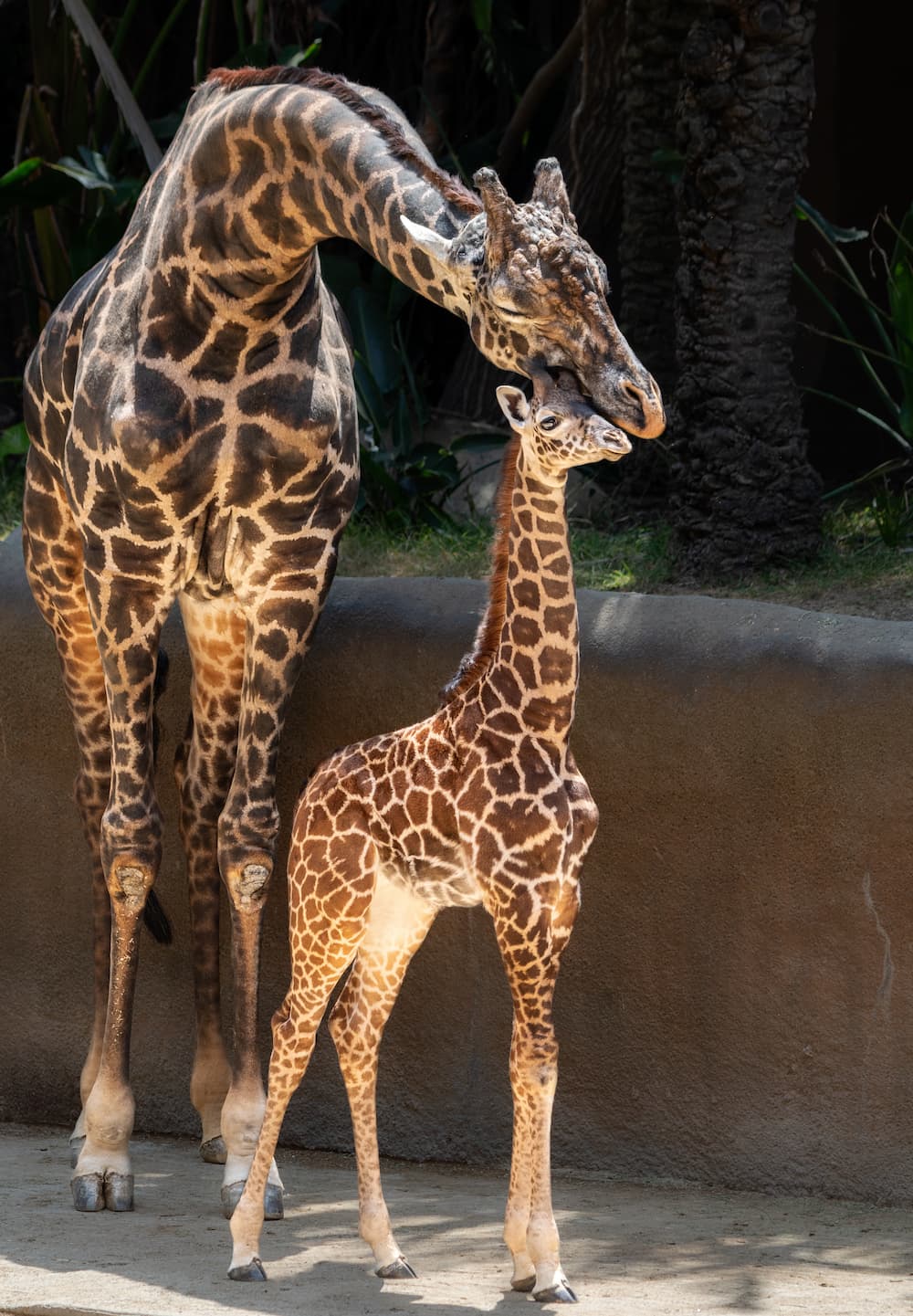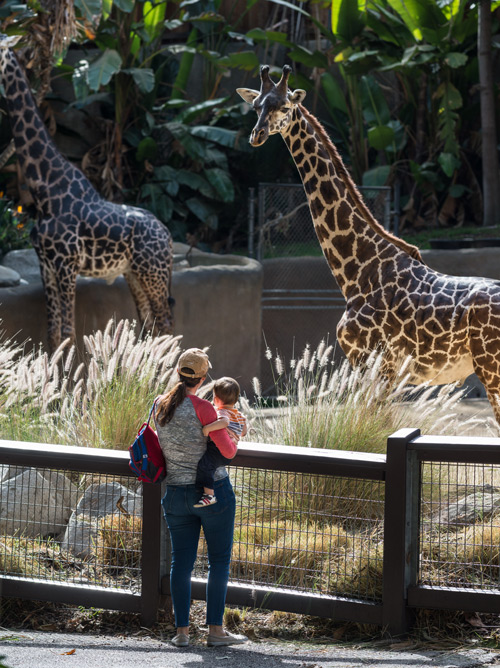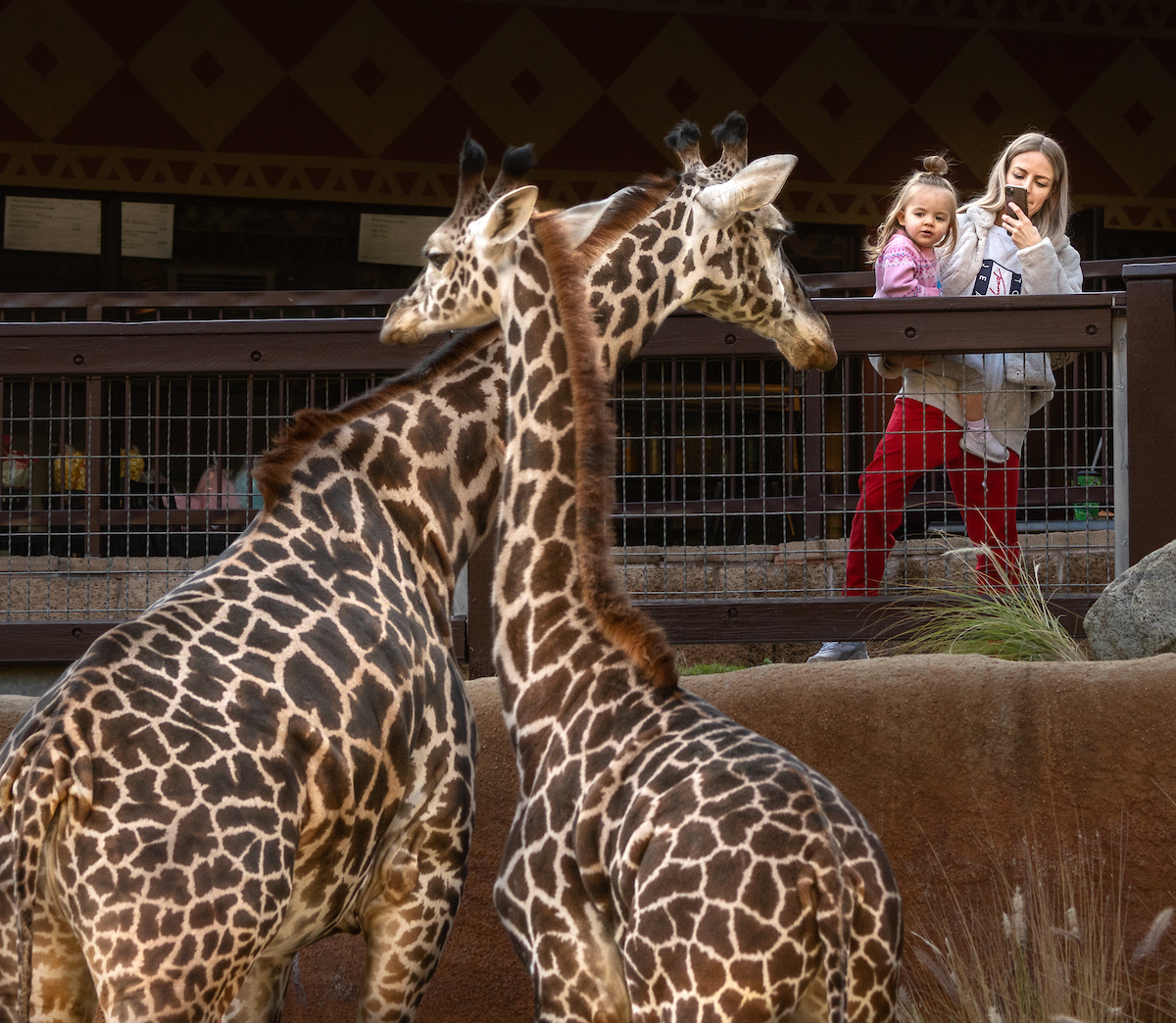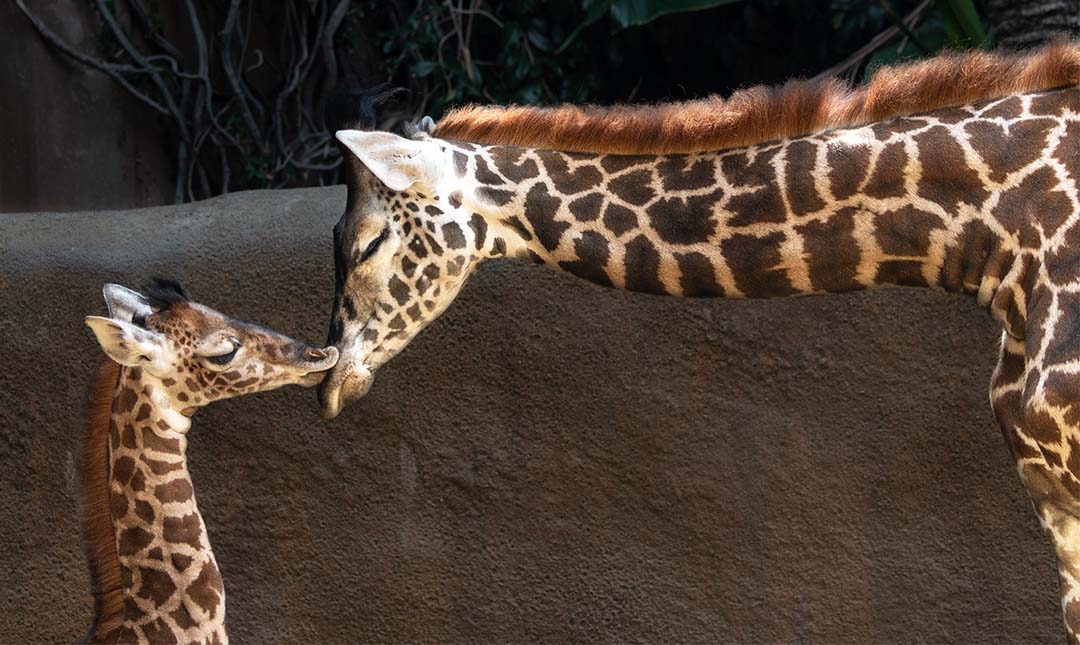About
Masai giraffes grow up to 18 feet tall, making them the lookout towers of the savannah. Their six-foot-long necks enable them to eat leaves, flowers, and twigs that most animals cannot reach. Like humans, giraffes have seven neck vertebrae, although each neck bone may be over 10 inches long. Giraffes’ favorite food is the whistling-thorn acacia which guards its leaves with pairs of thorns up to three inches long. Giraffes’ prehensile tongues measure about 18 inches long and are covered with bumps that protect it from thorns. Acacia trees, however, have other defenses. The trees respond to heavy browsing by producing foul-tasting tannins as well as pheromones that communicate a threat alert downwind to other acacia trees within 50 yards. These trees begin to release their own tannins, forcing the giraffes to move upwind. A giraffe’s tongue is shades of purple, blue, and black, which may prevent it from getting sunburned. The Masai giraffe is identified by its lacy-edged or irregular spot pattern. Each giraffe has a unique pattern.
Male giraffes (bulls) engage in “necking” contests to determine mating privileges. Bulls swing their great necks around and thump their heads into their opponent’s body to test each other’s strength. Necking seldom results in serious injury. Females (cows) are pregnant for 15 months before giving birth to a calf while standing up. At birth, the calf is about six feet tall and weighs around 150 pounds. A calf can stand 30 minutes after birth. The calf grows about three feet in the first year and attains its full height at 5 to 7 years of age. Giraffes are most at risk when drinking. To drink, they must spread their front legs and bend their heads down to reach a watering hole. This makes them vulnerable to lions, leopards, hyenas, and crocodiles. If threatened, they can decapitate a lion with a kick. With their long powerful legs, they can run up to 35 mph over short distances. Giraffe populations continue to decline due to poaching and loss of habitat for agricultural use.


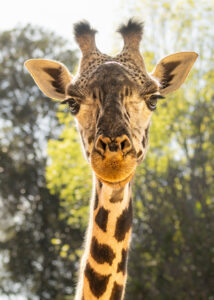

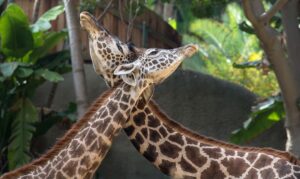
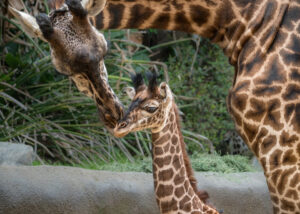
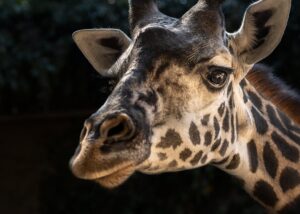
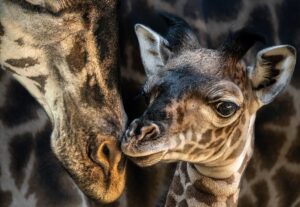
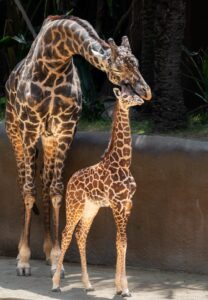

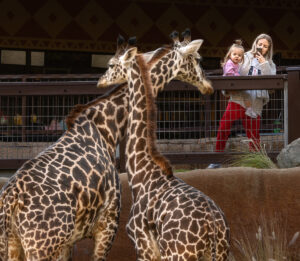

Status
While giraffe populations as a whole have declined by 40 percent in the past 30 years, Masai giraffe populations have declined 50 percent. In 2019, the Masai giraffe was officially classified as Endangered by the IUCN Red-List of Threatened Species. Primary threats in the wild include habitat loss and illegal hunting.
Habitat
Masai giraffes live on the savannahs of Kenya and Tanzania in east Africa.
Diet
Giraffes feed for 16 to 20 hours a day, browsing on leaves, twigs, bark, flowers, and fruit from more than 60 different kinds of plants. They can go without water for several weeks if they have enough fresh browse.
Physical Characteristics
Males are larger and taller than females, tipping the scales at 3,000 pounds and reaching up to 18 feet in height. Females weigh up to 2,000 pounds and reach 16 feet. The giraffe heart is about two feet long and weighs about 25 pounds. It can pump 16 gallons of blood per minute. Lifespan is about 25 years
LOCATION WITHIN THE ZOO
You’ll find this animal in the Africa section near Mahale Cafe. See Zoo Map.

